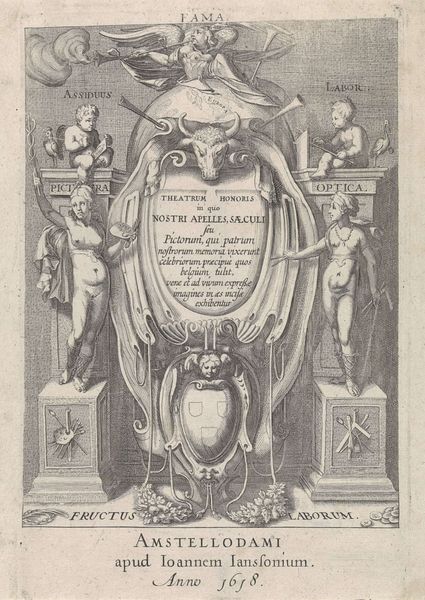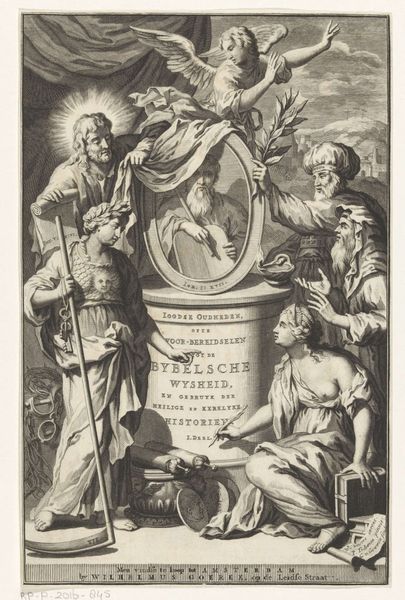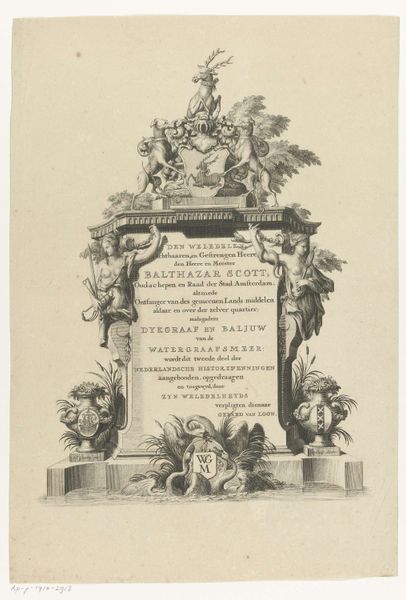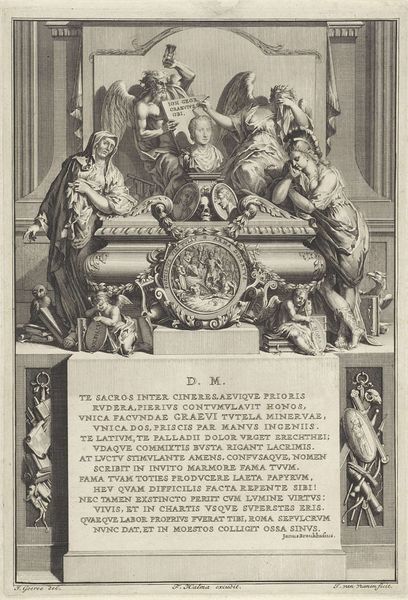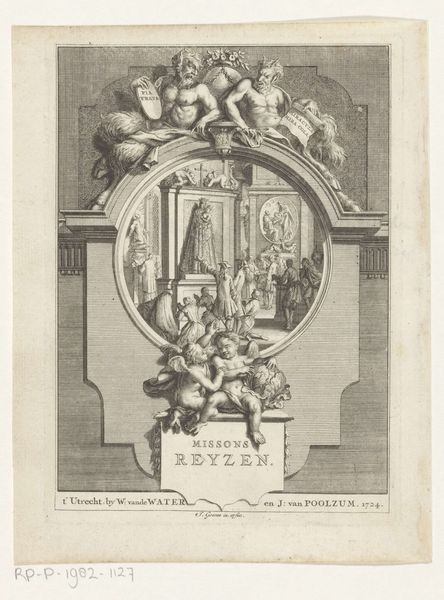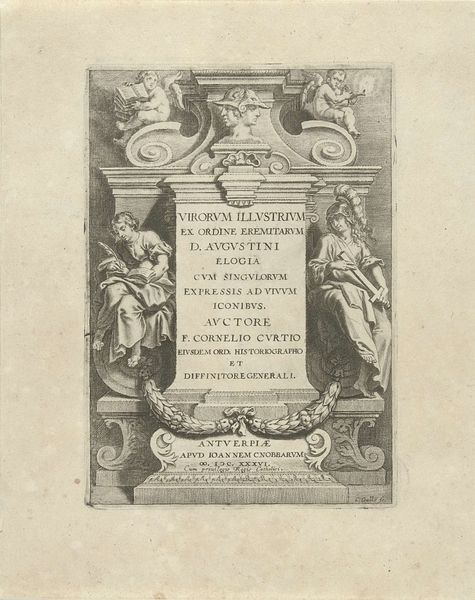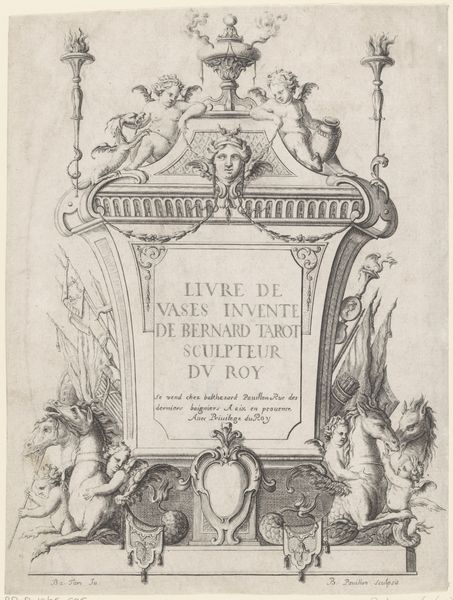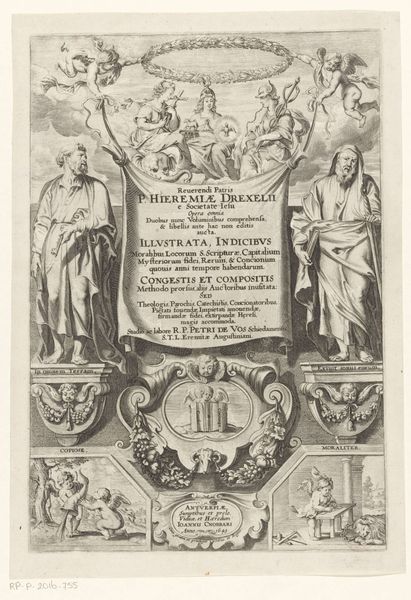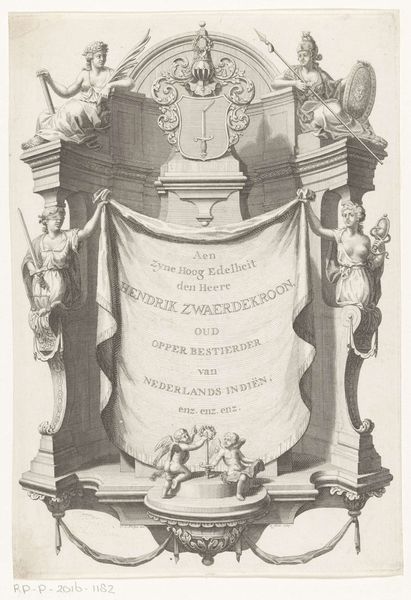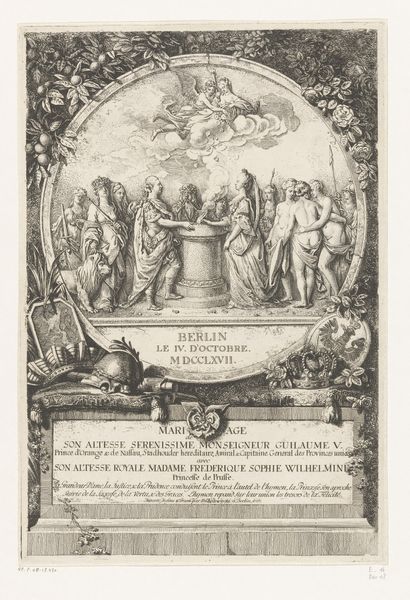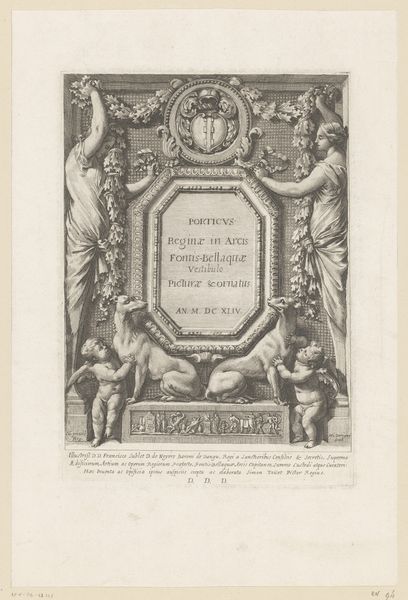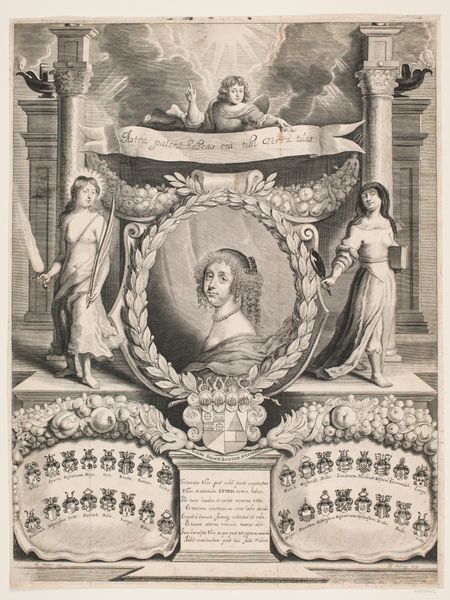
graphic-art, print, engraving
#
graphic-art
#
allegory
#
baroque
# print
#
old engraving style
#
figuration
#
line
#
engraving
Dimensions: height 186 mm, width 146 mm
Copyright: Rijks Museum: Open Domain
Curator: Here we have Simon Fokke’s 1741 engraving, "Adreskaart van Jacob Roeters," currently held in the Rijksmuseum collection. It's an incredibly detailed piece, clearly done with immense skill. What catches your eye first? Editor: Wow, talk about ornate! It feels almost theatrical. Like a stage set for…commerce? The whole thing just seems to overflow with…well, *stuff.* So dense with symbolic objects—makes you wonder what Roeters was really selling! Curator: Exactly! As an "adreskaart"—a sort of business card—it tells us Jacob Roeters was a fabricator of goods including gold, silver, and silk items, and half-silk fabrics with gold and silver thread, based in Amsterdam. Editor: Right, it’s practically shouting that at you. The name is emblazoned, front and centre. It's funny, the text itself feels like a piece of carefully arranged fabric, draped dramatically between those architectural pillars. Do you see the figures holding everything up? Talk about needing a good chiropractor! Curator: Indeed. It reflects the Baroque period’s emphasis on lavish display, reinforcing a message of wealth and artistry through sheer visual complexity and material value. Editor: Makes you wonder what Roeters' actual workshop looked like. I imagine the reality was a lot less gilded! I find the cherubs charming, especially the one hoisting a tiny ship like a prize! What an adorable symbol of Amsterdam's trading power at the time, don't you think? And is that Minerva enthroned on top? Curator: That’s right. The inclusion of Minerva speaks to the themes of wisdom, industry and divine support for the business. We can analyze the layers here—how labor informs symbolic representations in commercial art. And Fokke as the engraver obviously also used labour to sell labour and commodities… it’s a neat process of production feeding itself. Editor: That's such a keen point, how these depictions of "the good life" end up relying on work itself. Curator: It prompts you to think about all these details, all the skill, all the meaning… It makes what otherwise might be simply a historical document sing. Editor: Definitely, a good reminder to dig below the surface glitter.
Comments
No comments
Be the first to comment and join the conversation on the ultimate creative platform.
